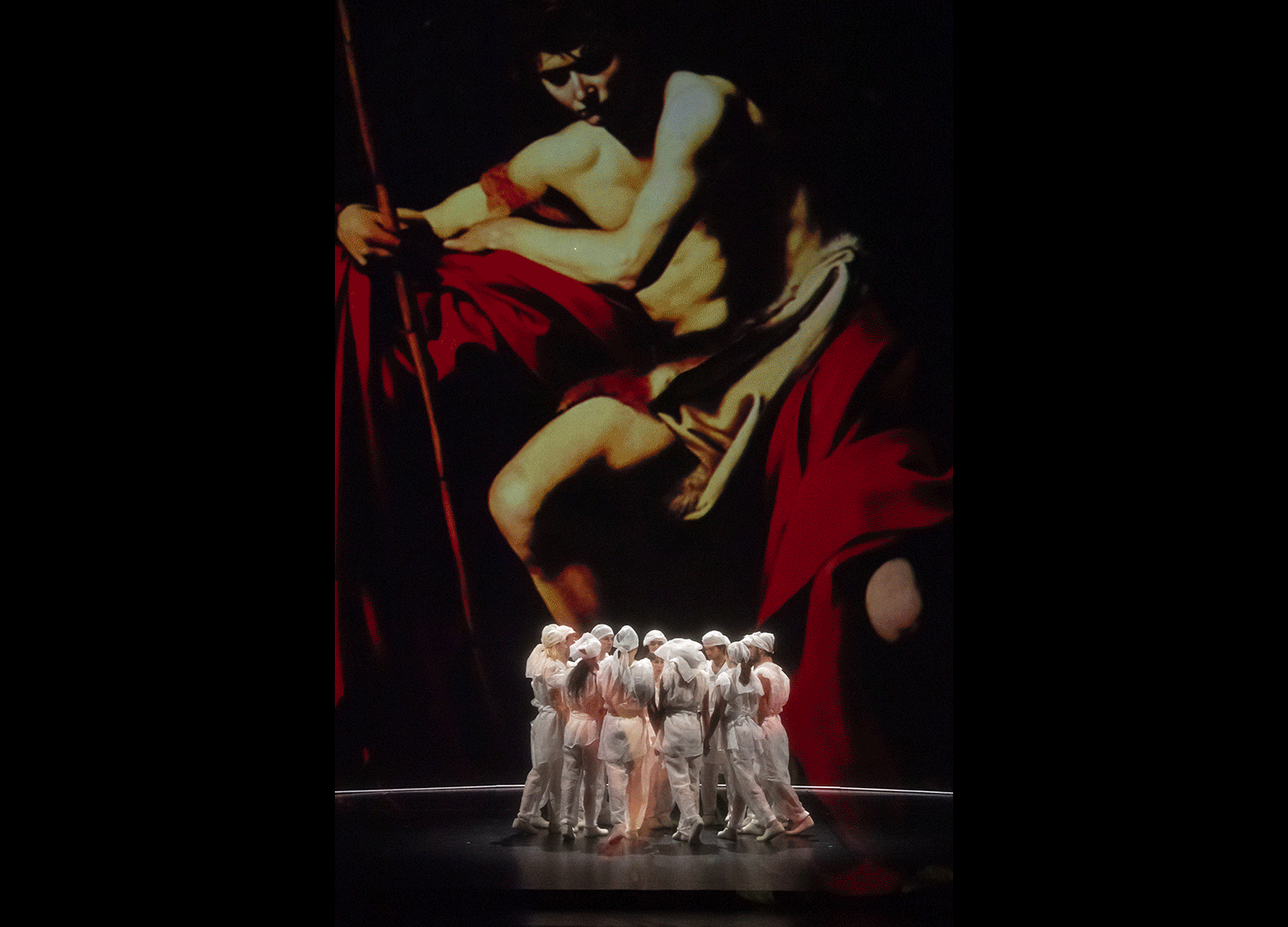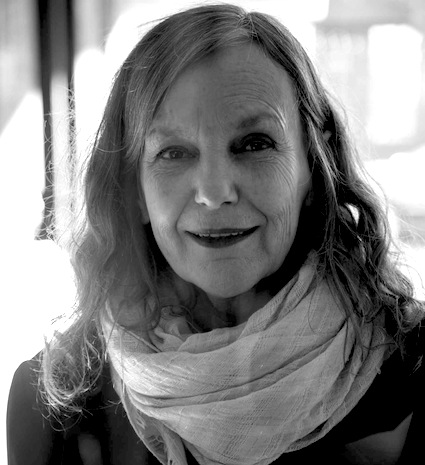Program Not Swedish enough! : Danses crues
Program Not Swedish enough! : Danses crues
Creation for 12 dancers of the CCN - Ballet de Lorraine
Inspired by NUIT DE SAINT-JEAN - Jean Börlin
Piece of the program Pas assez suédois !
Project as part of the Ballets Suédois (1920-1925) centenary celebrations
“The Swedish Ballet, directed by Rolf de Maré, existed only between 1920 and 1925, at about the same time as Diaghilev’s Ballet Russes. These foreign companies, whose reputation was forged in performances in Paris, were similar in that they both created a total art form including poetry, sculpture, music and of course dance. Jean Börlin was the Swedes’ only choreographer as well as their principal dancer. In some photographs, Börlin and his rather chubby face give him the appearance of a child. In others, he is nearly unrecognizable, as he changed his appearance to fit the works he created. Börlin portrayed a Harlequin or a dervish, as well as many other exotic or abstract characters ... he found his inspiration everywhere, from the free dances of Isadora Duncan, the Expressionist pieces by Mary Wigman, the characteristic movements of Charlie Chaplin, even those from Swedish folklore. I personally do not know his dances well since they are not easily accessible. I do not know their internal dynamics, nor their actual place in space and time. This was for me an important problem in beginning this project, in spite of my personal interest in reviving dances from the past. So I am a bit stumped looking at Börlin’s work, while also being inspired to explore his way of looking at the world and resonating with it. And though I admire the modernity of his creative process, which I seem to have inherited, I wonder which piece I should look at to reactivate the creativity of Börlin and the Swedish Ballet.
Little by little, given the unexpected circumstances of our current society – I decided to create a piece based on his Nuit de Saint-Jean (Night of Saint John), performed at the Théâtre des Champs Élysées in Paris, in 1920. One reason for this choice is Börlin’s use of Swedish folk dancing in which the dancers touch hands. Of course, given current public health issues, touching hands is not allowed. I found out that it is possible to see excerpts of the dances in Nuit de Saint-Jean in a film by Marcel l’Herbier from 1925. The circles and dances were meant to be “first” and “raw,” but they were adapted by Börlin. By bringing these dances to the stage, Börlin used the characteristically open imperfect and traveling nature of folk dancing to create a “fun, sympathetically nostalgic” entertainment, a little too caricatural for my taste. So I chose to look instead at their tradition – these dances are still performed today and have been accurately filmed and documented, and can easily be seen on the internet. I decided to use these basic Swedish folk dances to contrast them with other folk dances, which I discvered when I was looking for inspiration for the dances in Nijinsky’s Sacre de Printemps. I was impressed with some Macedonian dances which seemed to have steps similar to those in Nuit de Saint-Jean. The confrontation between these folk dances would allow me to separate out their common denominators, to recreate them based on their simplicity, their clarity, while also allowing me to engage the diversity of their layered textures, affected by their changing rhythms, not being obligated to a single tempo. These changes, danced brilliantly by the dancers, showcase their nearly invisible but impressive virtuosity.
Danses crues also includes other sources, notably the writings of Marguerite Duras, who spoke poetically of the “negative hands” found in the Magdalenian grottoes of southwest France, the examples of their art. There are also films on different subjects (musicians, harvests, etc.) and of various genres (documentaries or art films); photographs by Arnold Van Gennep – one of the first French folklorists – and an anonymous Saint John farandole which includes a large vertical fire. There are also famous paintings by Caravaggio, representing John the Baptist (the patron of this famous night’s celebration) and others by this painter who painted “hands reaching toward the impossible” (Georges Didi-Hubermann). There are several common themes: hands forming joyful circles and the famous night where nostalgia is present, not to be ignored. All these elements mixed together are meant to sustain and support Börlin’s artistic posture. Danses crues is meant to involve a structure which differs from that featured by the Swedish Ballet, which sought artistic synergy. Danses crues is constructed using the idea of weaving together, intercutting, including inside the musical score – painting, poetry, film and dance. The text, the “memory objects” which are the photographs and films, the bodies – both archives for and themselves considered as art objects – show the relationship to the past and to certain questions which continue in contemporary art, like death and desire. Danses crues focuses on the relationship between memory, history, myths and the different modalities of representing time and space. Danses crues marks the separation of image and sound as well as the emotional power generated by their convergence. Danses crues places itself in the long evolution of the history of art works, of replacing art in the center of that which concerns us, accompanying and questioning the inexorable changes moving through our societies. And there is an attempt to address the implicit question Börlin asked in Nuit de Saint-Jean: where does art begin? And the question driven by our pandemic reality: how is art essential to our societies?”

Dominique Brun

Performer and choreographer, Dominique Brun co-founded the company La Salamandre (1980 to 1988). Together they came third at the international competition of Bagnolet (1981), “Le Ballet pour demain”. She also co-founded Quatuor Albrecht Knust (1994 to 2003), with whom she worked on recreating dances from the historical repertoire from scores established in Labanotation. After Quatuor Albrecht Knust dissolved, Dominique Brun created Siléo (2004) from a text by Wajdi Mouawad and dances from the interwar period by Valeska Gert, Kurt Jooss, Dore Hoyer, Doris Humphrey, Mary Wigman.
In 2007, Dominique Brun produced a pedagogical DVD dedicated to L’Après-midi d’un faune [The Afternoon of a Faun] (1912) by Naslav Nijinsky. On Jan Kounen’s invitation, she refashioned extracts of Sacre du printemps [The Rite of Spring] (1913; Nijinsky), from the period’s archives, for the film Coco Chanel & Igor Stravnisky (2010).
Supported by L’Association du 48, directed by the dancer and choreographer Sylvain Prunenec, she extended her research on the Sacre through a diptych: Sacre #197 (2012) and Sacre #2 (2014). She concluded this cycle of work dedicated to Nijinsky with the creation of Jeux – Trois études pour sept petits paysages aveugles (2017). Next came Les Perles ne font pas le collier, a piece she co-signed and danced with Sylvain Prunenec (2018). Most recently, she has created Le Poids des choses & Peter and the Wolf (2019), her first performance choreographed for children as well as adults, basing it on Rudolf Laban’s Effort system.
In parallel to her research on movement, Dominique Brun has developed a distinct artistic taste for the relationship between music and dance. In 2016, the meeting with the orchestra Les Siècles (under the direction of François-Xavier Roth) led to the Philharmonie de Paris and Les porteurs d’ombre sharing a stage for the Hommage à Nijinski project, which toured as far as China.
Dominique Brun is now working on two major works by Bronislava Nijinska. Her rereading of Les Noces and Un Bolero led her to a choreographic, dramaturgical, and musical interpretation. The future of Les Noces and Un Bolero lies between tradition and interpretation; between written works and choreographic invention; in the metamorphosis and dance.
